Archive
Freie Deutsche Kultur
- Newsletter
- Freie Deutsche Kultur
Word Count: 3
- Free German League of Culture
- 1939
- 1945
Free German League of Culture (Freier Deutscher Kulturbund), 36 Upper Park Road, Hampstead, London NW3.
- London (GB)
The Free German League of Culture was an association of emigrant artists and authors who organised exhibitions, concerts and lectures. The events were announced in the Freie Deutsche Kultur newsletter.
Word Count: 30

Announcement for the Camp-Art in Kanada exhibition, 1941, Freie Deutsche Kultur, no. 4, 1941, p. 3, detail (Deutsche Nationalbibliothek, Deutsches Exilarchiv 1933–1945, Frankfurt am Main). 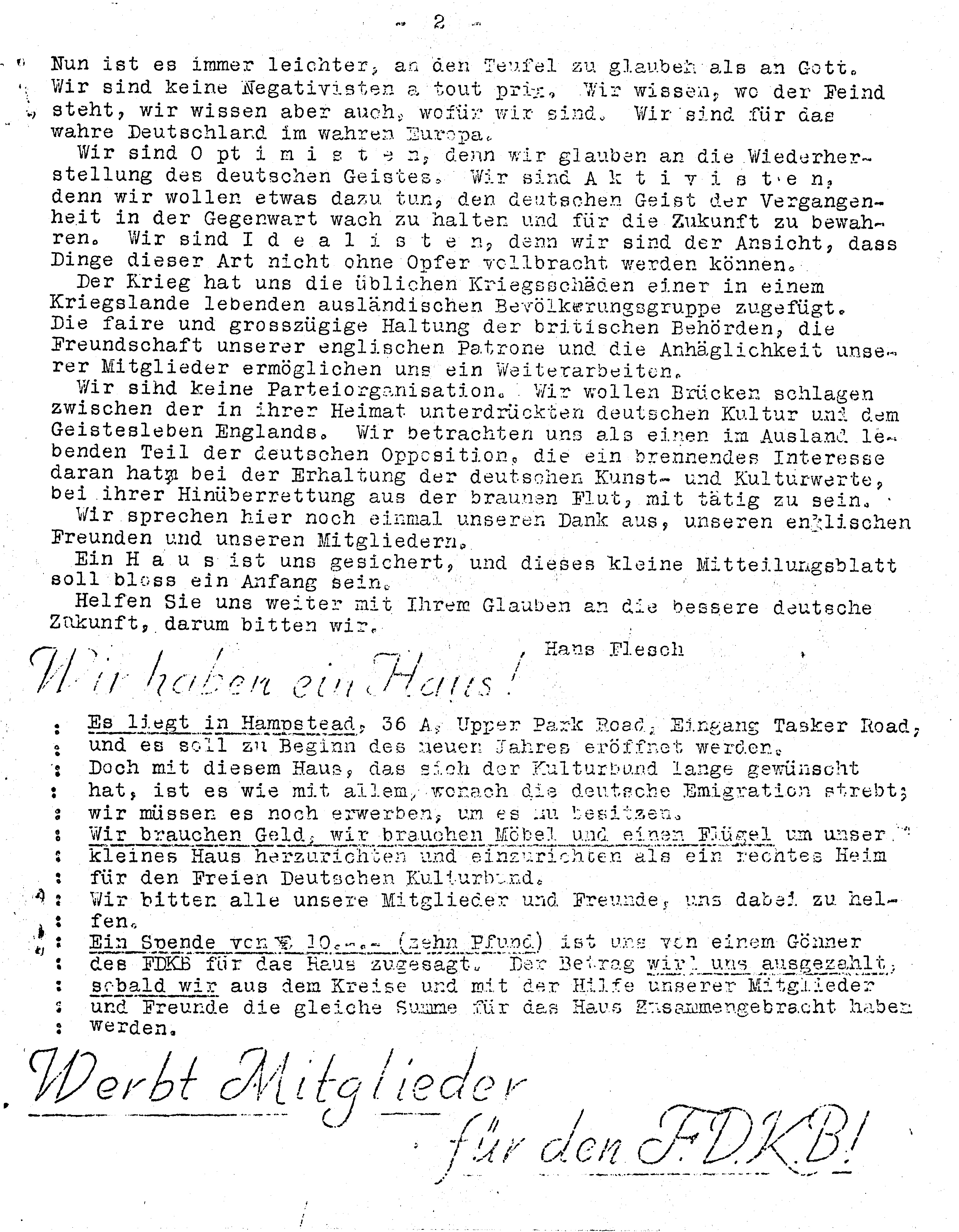
“Wir haben ein Haus.” Freie Deutsche Kultur, no. 12, 1939, p. 6 (Deutsche Nationalbibliothek, Deutsches Exilarchiv 1933–1945, Frankfurt am Main). 
36 Upper Park Road – the clubhouse of the Free German League of Culture from 1939 (Photo: Julia Winckler, 2008, originally used in Brinson/Dove 2010). 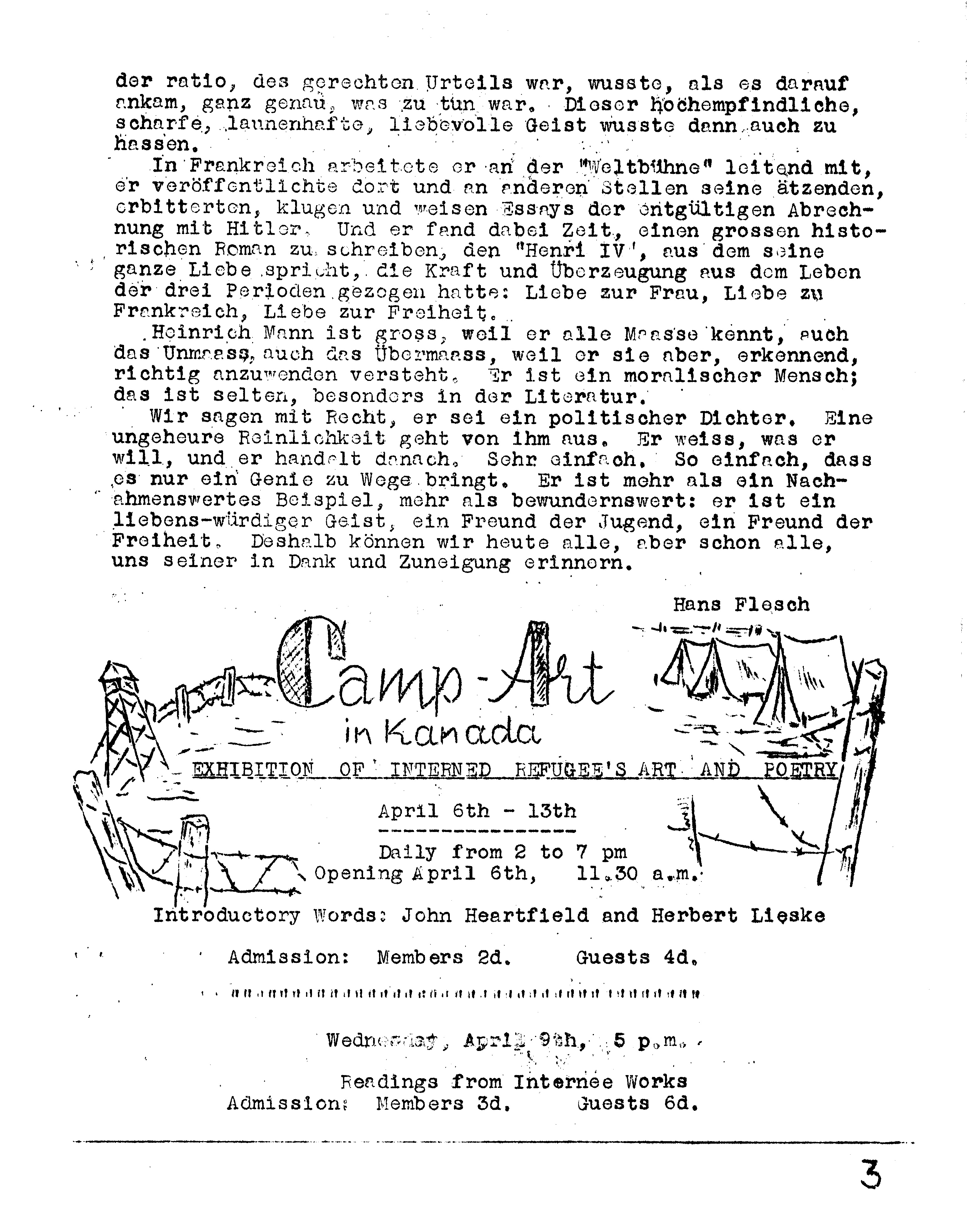
Announcement for the Camp-Art in Kanada exhibition, 1941, Freie Deutsche Kultur, no. 4, 1941, p. 3: Introductory Words by John Heartfield and Herbert Lieske (Deutsche Nationalbibliothek, Deutsches Exilarchiv 1933–1945, Frankfurt am Main). 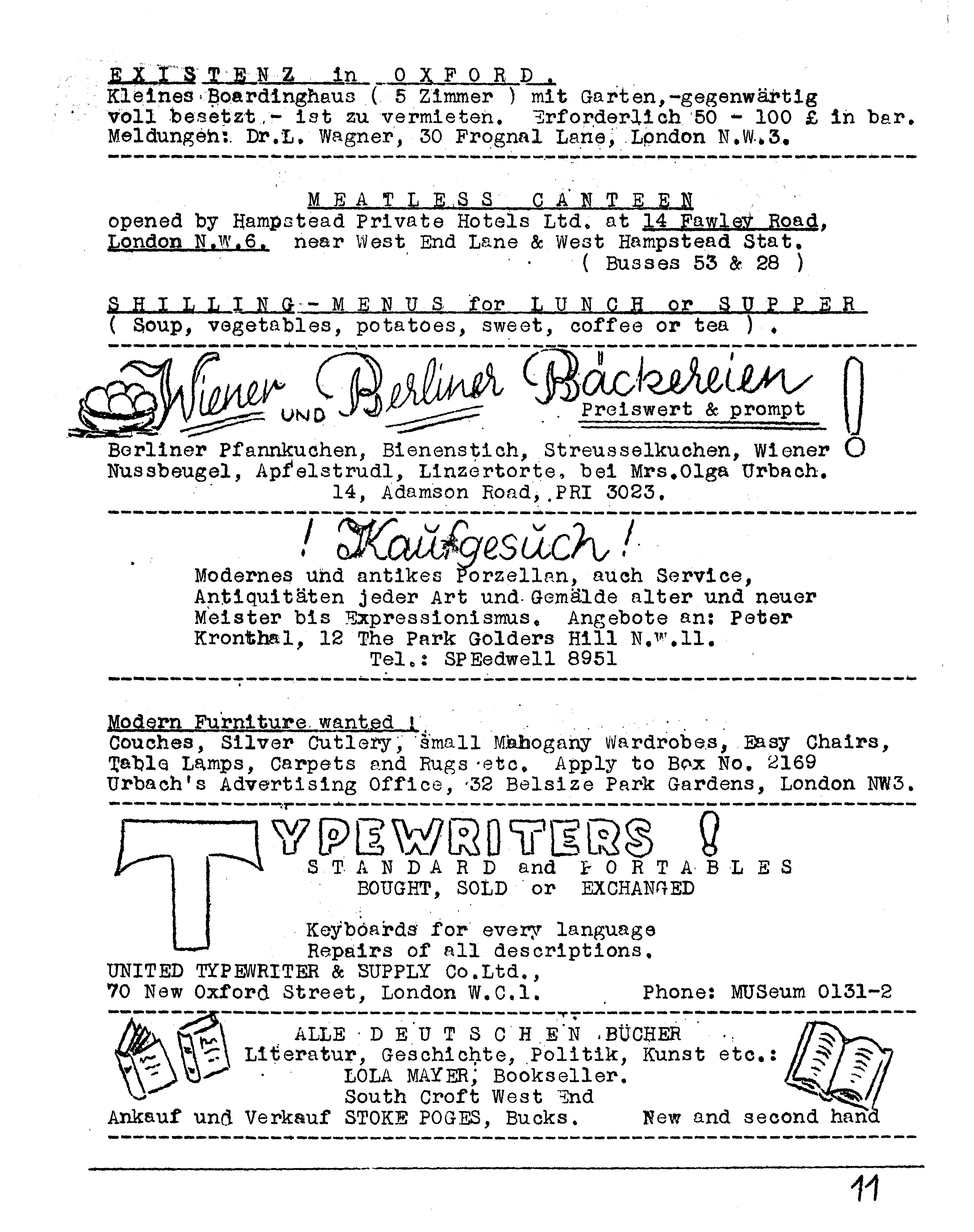
Advertisements in Freie Deutsche Kultur, no. 4, 1941, p. 11: From boardinghouses to typewriters, from modern furniture wanted to Wiener and Berliner bakeries (Deutsche Nationalbibliothek, Deutsches Exilarchiv 1933–1945, Frankfurt am Main). 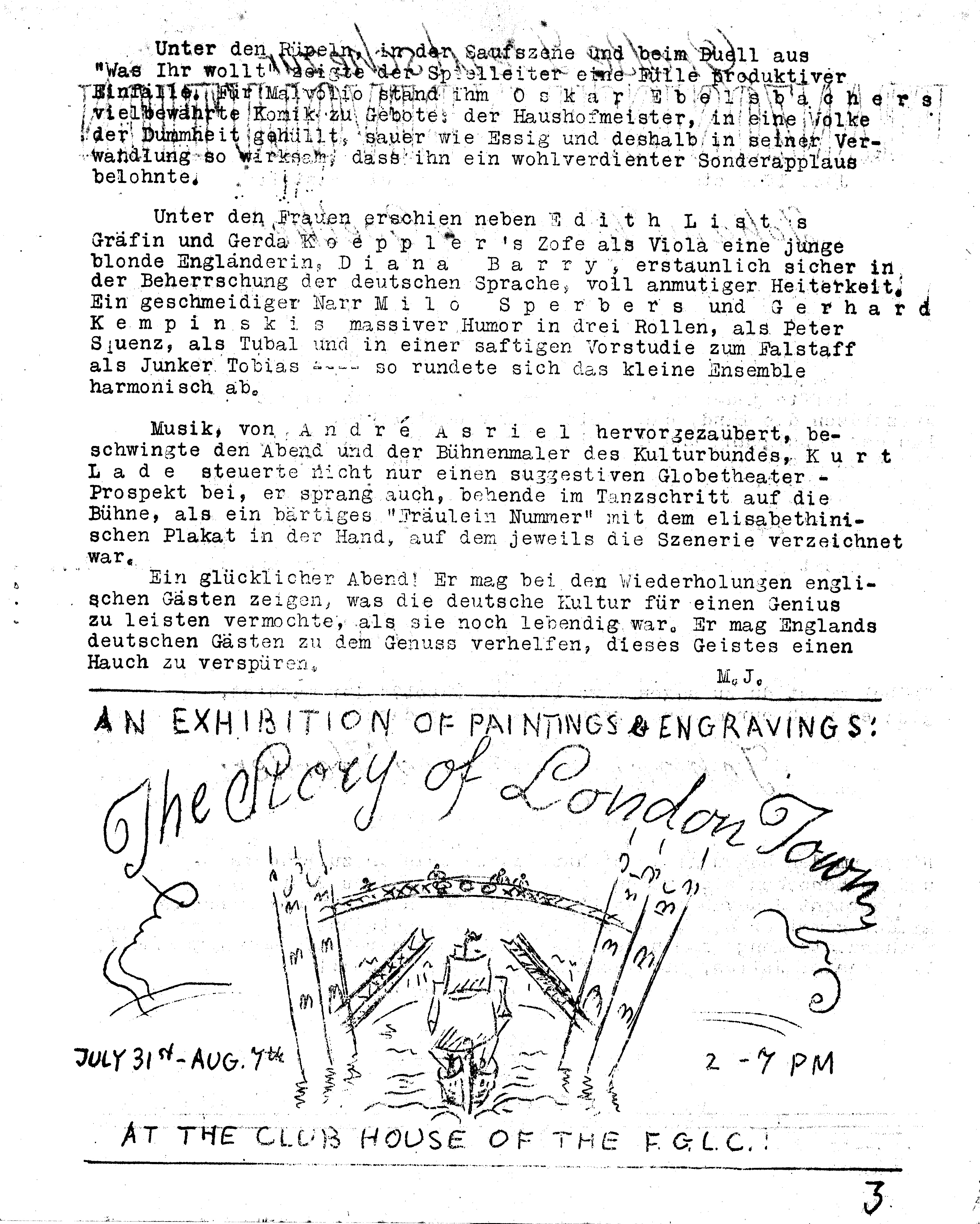
Announcement for The Story of London Town exhibition, 1941, Freie Deutsche Kultur, no. 7, 1941, p. 3 (Deutsche Nationalbibliothek, Deutsches Exilarchiv 1933–1945, Frankfurt am Main). 
Advertisements in Freie Deutsche Kultur, no. 2, 1942, p. 14: Lindsay Drummond publishing house, the Central Books Ltd. bookshop, the Laterndl theatre and cabaret, The Austrian Theatre and “What the Stars Foretell” – a new cabaret revue of the Free German League of Culture (Deutsche Nationalbibliothek, Deutsches Exilarchiv 1933–1945, Frankfurt am Main). 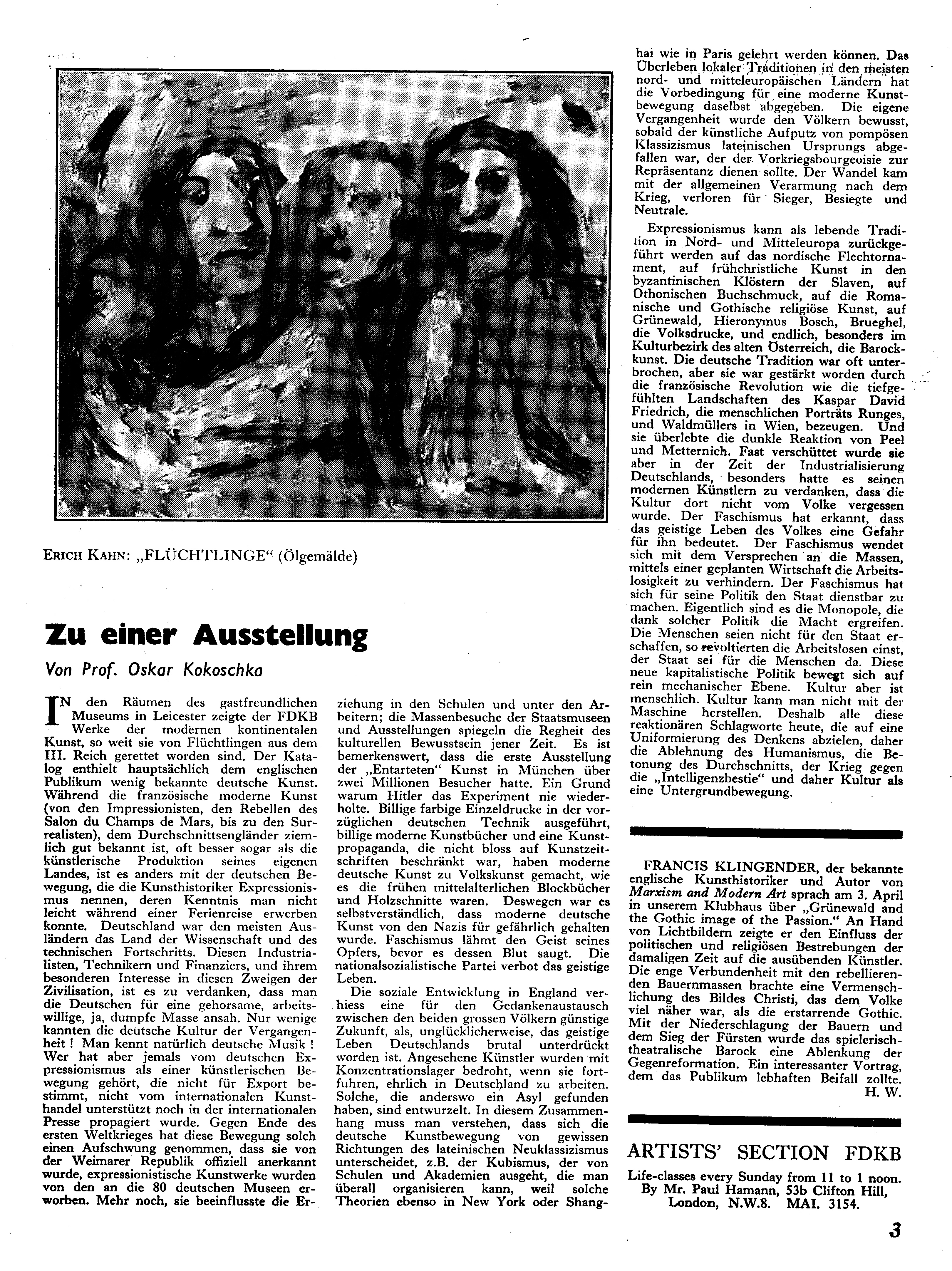
Review of the Mid-European Art exhibition (1944) at Leicester Museum and Art Gallery by Oskar Kokoschka in Freie Deutsche Kultur, no. 5, 1944, p. 3. The page includes a reproduction of Erich Kahn’s Flüchtlinge, announcements of a lecture by Francis Klingender and life classes by the sculptor Paul Hamann (Deutsche Nationalbibliothek, Deutsches Exilarchiv 1933–1945, Frankfurt am Main). 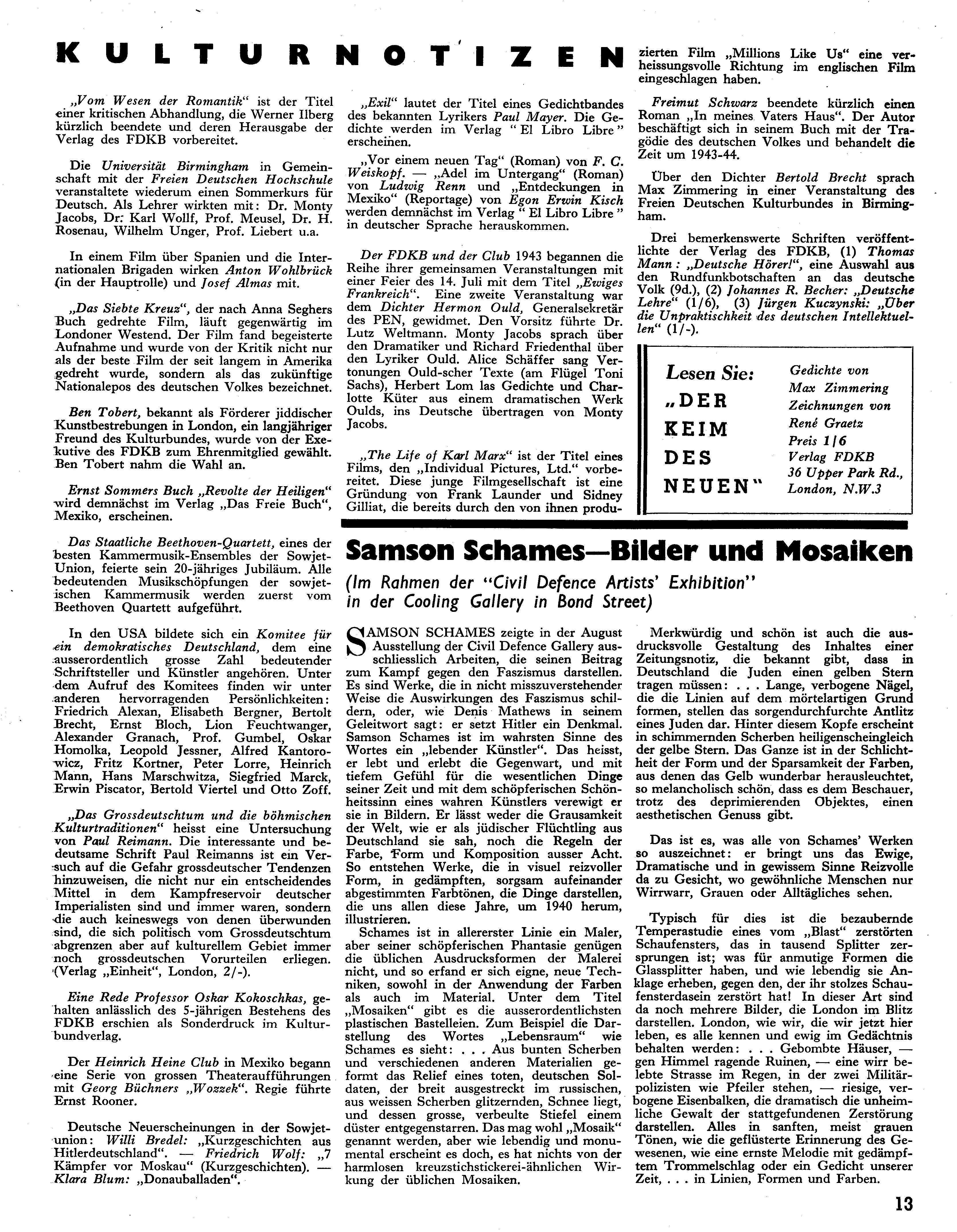
Article on “Samson Schames – Bilder und Mosaiken” at the Civil Defence Artists’ Exhibition (1944) in Freie Deutsche Kultur, no. 10, 1944, p. 13 (Deutsche Nationalbibliothek, Deutsches Exilarchiv 1933–1945, Frankfurt am Main). Bihler, Lori Gemeiner. Cities of refuge: German Jews in London and New York, 1935–1945. SUNY Press, 2018.
Brinson, Charmian, and Richard Dove, editors. Politics By Other Means. The Free German League of Culture in London 1939–1946. Vallentine Mitchell, 2010.
Coles, Anthony. John Heartfield. Ein politisches Leben. Böhlau, 2014.
Freie Deutsche Kultur – Mitteilungsblatt des Freien Deutschen Kulturbundes in England, 1939–1945.
Flesch, Hans. “Freunde in der Not.” Freie Deutsche Kultur, no. 6, 1941, p. 2.
Heartfield, John. “Camp-Art in Canada.” Freie Deutsche Kultur, no. 5, 1941, p. 1f.
Müller-Härlin, Anna. “The Artists’ Section.” Politics By Other Means. The Free German League of Culture in London 1939–1946, edited by Charmian Brinson and Richard Dove, Vallentine Mitchell, 2010, pp. 54–73.
Schwitters, Kurt. Wir spielen, bis uns der Tod abholt. Briefe aus fünf Jahrzehnten. Compiled by Ernst Nündel, Ullstein, 1974.
Vinzent, Jutta. Identity and Image. Refugee Artists from Nazi Germany in Britain (1933–1945) (Schriften der Guernica-Gesellschaft, 16). VDG, 2006.
Word Count: 141
Deutsche Nationalbibliothek, DEA Exilpresse Digital.
Word Count: 5
My deepest thanks go to Sylvia Asmus and Katrin Kokot (Deutsche Nationalbibliothek, Deutsches Exilarchiv 1933–1945, Frankfurt am Main) for providing me with the images of Freie Deutsche Kultur.
Word Count: 27
- London
- Burcu Dogramaci. "Freie Deutsche Kultur." METROMOD Archive, 2021, https://archive.metromod.net/viewer.p/69/1470/object/5140-11260521, last modified: 27-04-2021.
-
Anna FreudPsychoanalystLondon
The psychoanalyst Anna Freud and her partner Dorothy Burlingham-Tiffany opened the War Nursery research and care facility in Hampstead in January 1941 under the impact of the bombing of London.
Word Count: 29
Jussuf AbboSculptorGraphic ArtistLondonThe Berlin sculptor Jussuf Abbo emigrated together with his family to London in 1935, where he received a limited number of commissions and participated in a few group exhibitions.
Word Count: 28
John HeartfieldArtistGraphic DesignerFotomonteur (mounter of photographs)LondonAfter escaping from his first exile in Prague in December 1938, the political artist John Heartfield lived in London since 1950, working for Picture Post and the publisher Lindsay Drummond.
Word Count: 28
Julian HuxleyZoologistPhilosopherWriterLondonJulian Huxley was the director of London Zoo from 1935 to 1942 and worked closely with emigrant photographers, artists and architects, including Berthold Lubetkin, Erna Pinner and Wolf Suschitzky.
Word Count: 27
Herbert ReadArt HistorianArt CriticPoetLondonThe British art historian Herbert Read established himself as a central figure in the London artistic scene in the 1930s and was one of the outstanding supporters of exiled artists.
Word Count: 30
Lindsay DrummondPublishing HouseLondonThe artist John Heartfield designed covers for the publishing house Lindsay Drummond, which had an anti-fascist programme and published books by emigrated authors such as Wilhelm Necker and Felix Langer.
Word Count: 30
Kurt SchwittersArtistPoetLondonThe artist and poet Kurt Schwitters lived in London between 1941 and 1945, where he stood in contact to émigré and local artists, before moving to the Lake District.
Word Count: 27